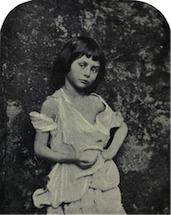Alicia y sus espejos

Muy pocos datos son los que se tienen que agregar acerca de Alicia en el país de las maravillas y Alicia a través del espejo, máximas obras del autor británico Charles Lutwidge Dodgson (mejor conocido como Lewis Carroll), y es que, pese a las dificultades que su traducción implica, debido a que Carroll inventa palabras y lleva a cabo complejos juegos matemáticos), la obra ha sido traducida a infinidad de lenguas. Tal como afirma Alexander Woolcott:And there is no telling how many copies of it have been printed and sold. For when it was new, there was no binding law of international copyright and it was as much the prey of all the freebooters in America as was a somewhat kindred work of genious that came out of England a few years later -the nonsensical and lovely thing called Pinafore.And the Alice books have known no frontier. If you poke about in the bookstalls on the Continent, you wll stumble inevitably on Alice Abenteur im Wonderland or Le Aventeur de’Alice nel Paese Meraviglie (with illustrations, of couse, by Giovanni Tenniel). You might even run into La aventuroj de Alicio en Mirlando which, if you must know, is life down the rabbit-hole as told in Esperanto. And you are certain to come upon Les Aventures d’Alice au pays de Merveilles with one of the puns of the incorrigible Mock Turtle (Fausse- Tortue) rendered thus unrecognisable.La importancia de la obra de Carroll se extende más allá de la página impresa se ha convertido parte indudable y fundamental del imaginario cultural del mundo entero. A lo largo de los años la obra ha sido objeto de diversas reinterpretaciones y adaptaciones en toda clase de manifestaciones culturales.Una de dichas manifestaciones es la imagen, y más propiamente dicho: la ilustración.
Artículo publicado por la revista Reflexiones Marginales. Se puede consultar en el enlace:
https://reflexionesmarginales.com/blog/2013/12/01/alicia-y-sus-espejos/
